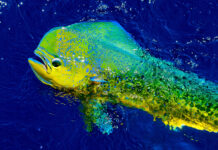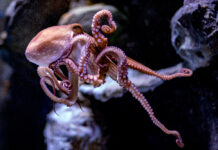While the flamingo is typically associated with warm, tropical climates and vibrant sunsets, let’s embark on a creative journey to envision this stunning bird in an unexpected setting: the icy waters of the Arctic Ocean. This article will explore the striking contrast between the flamingo’s characteristics and the Arctic environment, bringing to life a scene that blends warmth with chill.
Table of Contents
ToggleUnderstanding the Flamingo
Flamingos are fascinating birds known for their distinctive pink plumage, long legs, and graceful necks. They thrive in warm, shallow waters, feeding on algae, crustaceans, and small fish. Their coloration comes from the carotenoid pigments in the food they consume. In their natural habitats, flamingos can often be seen wading through water, their heads turned upside down to filter-feed.
Physical Characteristics
Flamingos are characterized by:
- Coloration: Their iconic pink feathers result from their diet, which is rich in carotenoids. Young flamingos are born gray and gradually develop their pink hue as they mature.
- Long Legs and Neck: These adaptations allow them to wade into deeper waters in search of food while maintaining balance.
- Unique Feeding Mechanism: Flamingos have specialized beaks that enable them to sift through mud and water for food.
The Arctic Ocean: A World of Ice and Wonder
The Arctic Ocean, known for its frigid temperatures and vast ice sheets, presents a starkly different landscape from the warm wetlands of flamingo habitats. This ocean is surrounded by majestic glaciers, ice floes, and a unique ecosystem that includes polar bears, seals, and various seabirds.
Characteristics of the Arctic Environment
- Extreme Temperatures: The Arctic is one of the coldest regions on Earth, with winter temperatures often dropping below -30°C (-22°F).
- Ice Coverage: Seasonal ice and glaciers dominate the landscape, impacting marine life and navigation.
- Unique Flora and Fauna: The Arctic is home to resilient wildlife adapted to survive in harsh conditions, relying on thick fur or blubber for insulation.
Imagining a Flamingo in the Arctic Ocean
Now, let’s create a vivid mental image of a flamingo standing in the Arctic Ocean. Picture a solitary flamingo, its vibrant pink feathers stark against the icy blue of the water and the white expanse of ice surrounding it.
The Scene
As the sun begins to rise over the horizon, casting a soft glow across the landscape, the flamingo stands gracefully on one leg, its long neck curving elegantly as it gazes around. The water gently laps at its feet, revealing patches of glistening ice.
In the background, majestic icebergs float serenely, their shapes contrasting with the delicate curves of the flamingo. The icy environment creates a surreal scene; the warmth of the flamingo’s coloration seems almost out of place against the starkness of its surroundings.
Adaptation: A Bird in an Unfamiliar Land
Imagine how the flamingo would adapt to such an extreme environment. Unlike its natural habitat, the Arctic offers few food sources for a flamingo. It would need to rely on its innate resourcefulness, perhaps scavenging for leftover fish or algae on the icy shores.
Survival Strategies
- Foraging Challenges: The flamingo may need to explore new feeding techniques, learning to dig through the ice to find sustenance.
- Temperature Adaptation: While flamingos are not equipped to handle extreme cold, its natural ability to regulate body temperature might help it survive short stints in the Arctic.
- Social Behavior: Typically social birds, the flamingo may experience loneliness in this harsh environment, leading to adaptations in behavior to cope with isolation.
Environmental Implications
The image of a flamingo in the Arctic also highlights the effects of climate change on wildlife and habitats. As temperatures rise and habitats shift, species may find themselves in new environments, leading to unexpected interactions between flora and fauna.
Climate Change and Wildlife
- Habitat Displacement: As global temperatures increase, many species are being forced to move to new areas, often leading to ecological imbalances.
- Adaptation and Survival: Some species may adapt to new environments, while others may struggle to survive, resulting in population declines or extinction.
A Beautiful Paradox
The image of a flamingo standing in the Arctic Ocean serves as a beautiful paradox, showcasing the resilience of nature and the ever-changing dynamics of our planet. While the flamingo is inherently a creature of warmth and vibrancy, envisioning it in an icy landscape allows us to reflect on the adaptability of life and the impacts of environmental changes. This imaginative exercise not only sparks creativity but also emphasizes the importance of understanding and protecting diverse ecosystems around the world. Through this vivid imagery, we are reminded of the interconnectedness of all living beings and the delicate balance that sustains our planet.








